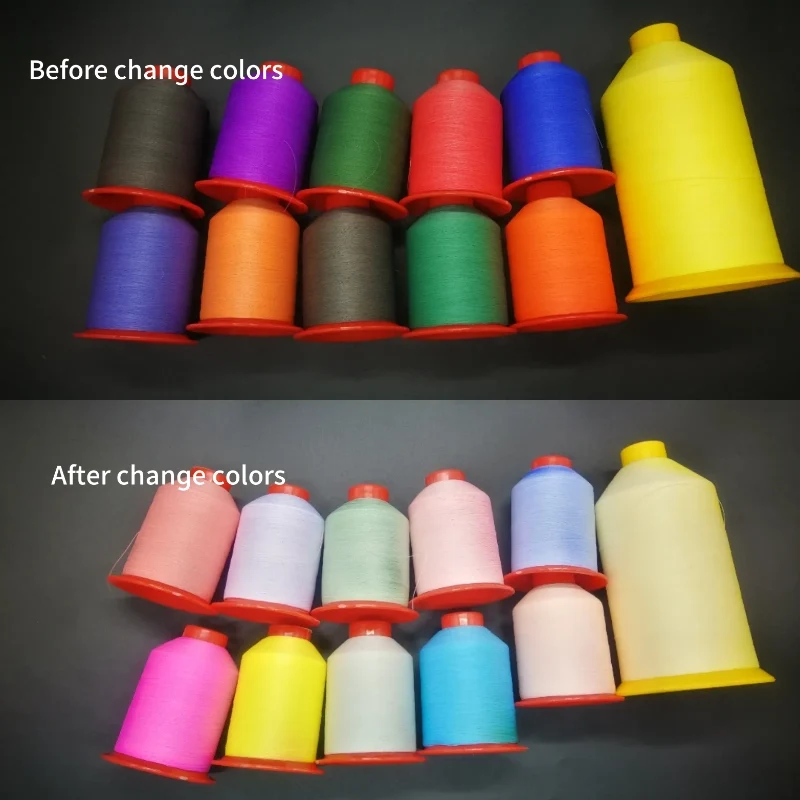The application of reflective yarn in emergency rescue: how to improve visibility and safety
Release time: 2024-12-26
As a key safety marking material, reflective yarn is widely used in the field of emergency rescue, especially in road traffic, accident scenes, disaster rescue and other scenarios. It significantly improves personnel safety and reduces accidents by improving visibility. In emergency rescue, the application of reflective yarn is mainly reflected in the following aspects:
1. Enhance visibility for rescuers
At night or in low-visibility environments, reflective yarn can effectively increase the visibility of rescuers, making them easier to identify by other passing vehicles or people. Rescuers usually wear clothing with reflective sewing yarn (such as reflective vests, jackets), which not only improves their visibility, but also allows them to be quickly discovered in emergencies and avoid accidents caused by unclear vision.
2. Set up emergency warning signs
High visibility reflective yarn are widely used in warning signs and roadblocks at emergency rescue sites, such as reflective cones, warning signs, reflective strips on rescue vehicles, etc. These signs help other vehicles or pedestrians on the road identify dangerous areas at the scene of an accident and remind them to slow down or avoid dangerous areas. Especially in highway and night rescue scenarios, reflective signs can significantly reduce the occurrence of secondary accidents.
3. Improve road safety
During emergency rescue operations, reflective yarn are also used to repair damaged road markings or supplement road reflective markings to ensure that drivers can pass safely in limited visibility. Especially in bad weather conditions (such as haze, heavy rain or blizzard), the auxiliary effect of reflective yarn can help drivers identify the road and driving direction, and avoid accidents due to limited vision.
4. Visibility of rescue vehicles
The application of reflective yarn on rescue vehicles is also crucial. Rescue vehicles are usually equipped with reflective strips, reflective paint, flash lights, etc., which can provide stronger visibility at the accident scene. Especially in complex environments, reflective yarn can help other vehicles see the existence of the rescue vehicle from a long distance, and Get out of the way in time.
5. Enhance the efficiency of emergency evacuation
At the scene of a natural disaster or accident, reflective yarn can be used to mark evacuation passages or safety exits, helping trapped people quickly find safe passages and reducing confusion and unnecessary injuries. In addition, reflective signs can also indicate the location of first aid stations, improving the efficiency and success rate of emergency rescue operations.
6. Improve the visibility of rescue tools
Reflective thread is not only used for rescue personnel and signs, but also widely used on rescue tools and equipment, such as reflective ropes, reflective first aid kits, etc. These tools can be quickly identified at night or in low-light conditions, thereby shortening rescue time and ensuring the smooth progress of rescue operations.
7. Technological advancements in reflective threads
As technology continues to advance, the materials and designs of reflective threads continue to improve. From traditional micro-glass bead technology to modern high-strength reflective film, the reflection efficiency and durability of reflective yarn have been significantly improved. These new materials can function in a wider range of environmental conditions, including extreme climates and high temperatures, ensuring that emergency rescue operations are always carried out efficiently and safely.
The application of reflective yarn in emergency rescue improves visibility and ensures personnel safety. Whether it is on accident scene markers, rescue personnel’s equipment, or rescue vehicles and tools, reflective yarn play a vital role. Through technological innovation and continuous expansion of applications, reflective yarn will continue to play a greater role in the field of emergency rescue, contributing to improving rescue efficiency, reducing secondary accidents and ensuring public safety.


